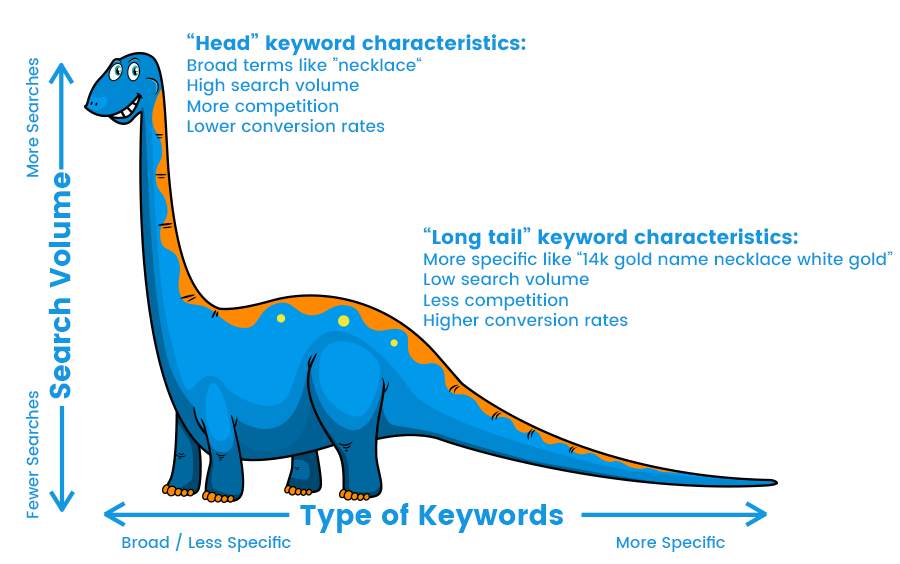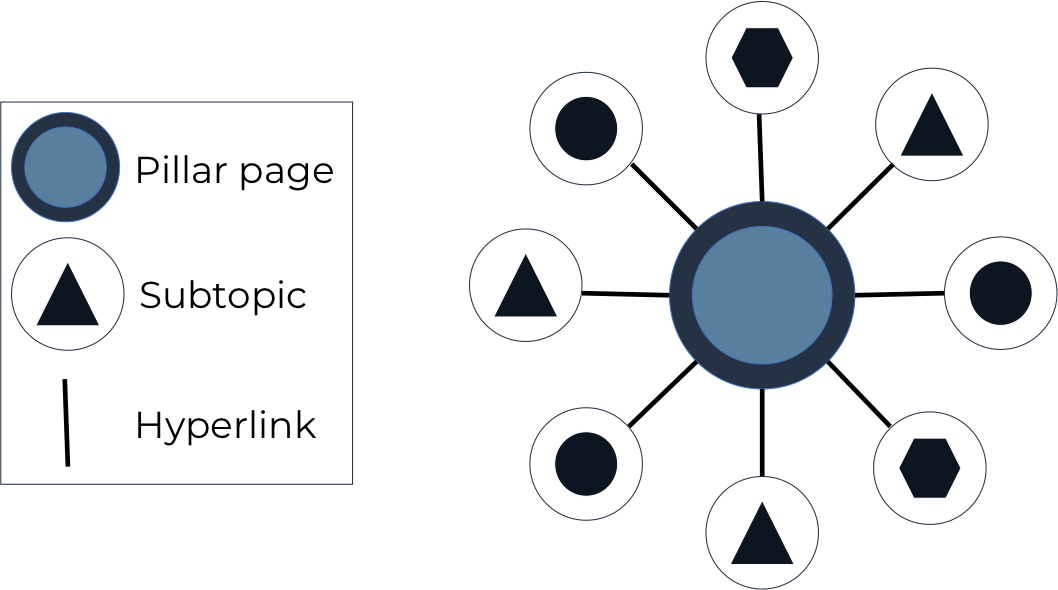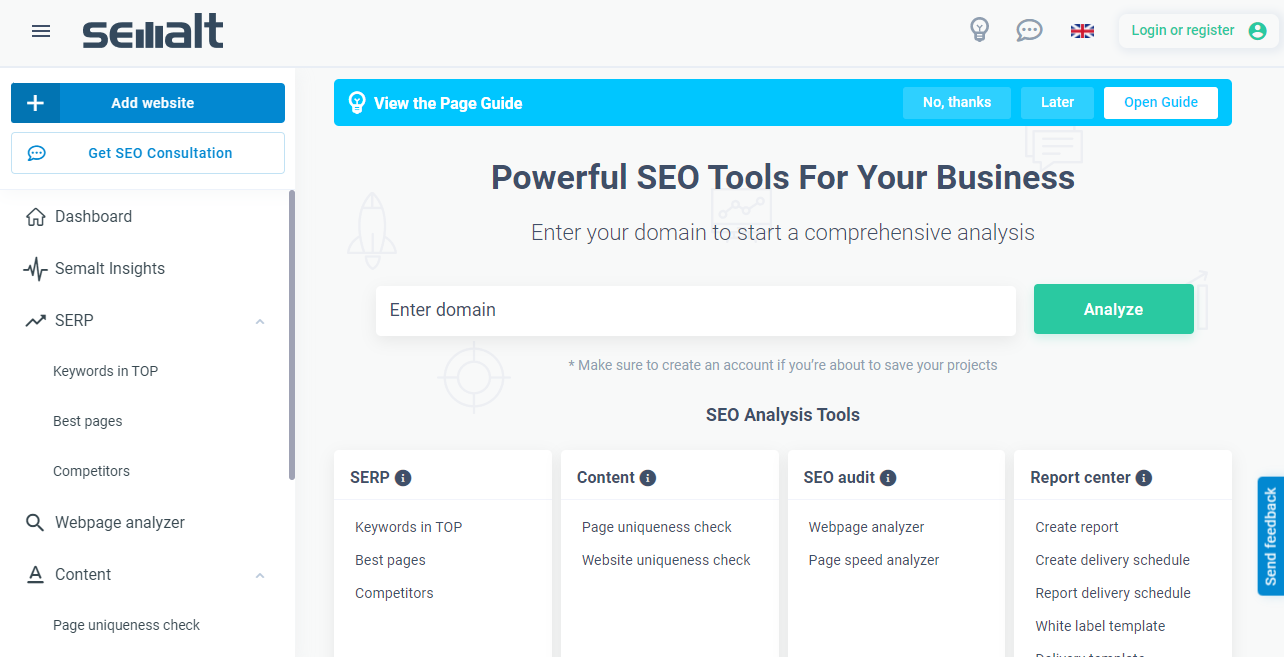Semalt SEO Strategy To Organize Blog Content

One of the most important and impacting changes in search engine algorithms was the introduction of Artificial Intelligence (RankBrain) capable of understanding user questions.
This evolution in the semantic direction has changed the rules of SEO Content and placed the focus on how content is organized: alongside the KeyWord strategy, attention is growing on how content is structured.
The Topic Cluster is a tactic of organizing content around certain topics and 'thematic areas' which is very effective on the SEO and user experience side. How to build an SEO strategy for organizing blog content? If you want to know what Topic Cluster is and why to use them in your SEO strategy, read on.
In this guide, we will explain the following:
- what Topic Cluster is
- a step back to understand what has changed in SEO
- what are Pillar Pages and how they are built
- wow to choose topics for the Topic Cluster
- the best KeyWord strategy for Topic Cluster and Pillar Page
1. Topic Cluster
The Topic Cluster is a content organization tactic that involves the development of related blog posts around a single theme.
What does this mean in practical terms? Create a Pillar Page for each topic identified and validated with KeyWord analysis (topic): a long and vertical content that addresses the main topic, to which a series of corollary posts on the same topic are linked through links (sub-topic posts).
2. A step back: what has changed in SEO
At this point, you may be wondering how the topic cluster works and why it is effective for ranking.
To answer this question, we need to step back and retrace the history of SEO.
In recent years, SEO strategies have had to adapt to the changes caused by an ever-increasing "severity" of the algorithms of Google and other search engines.
In the beginning, there were keywords, single keywords used by users for searches: the first algorithms rewarded sites that contained these same words, because they were deemed suitable to provide the answers the user was looking for.
Unfortunately, many SEO Specialists began to make improper use of this strategy, filling the pages of their site with Keyword Stuffing at the expense of the quality of the content and the user experience.
As a result, Google decided to improve its algorithm year after year, to return users more relevant and qualitative content than their search queries.
From 2003 to 2005, algorithms were developed that were able to penalize the abuse of KeyWord and low-quality links and to return search results based on the geographical location of users.
From 2007 to 2010, the algorithm began to return video, news, and image results to the SERP.

In 2011 and 2012 it was the turn of attention to quality content and publication frequency (the algorithm rewarded - and rewards - sites that publish new content regularly).
In 2013 Hummingbird arrived, the algorithm that knows how to understand entire search phrases typed by users and provides personalized results.
With it began the first major SEO revolution. To which is added, subsequently, the evolution of the algorithm that considers the geolocation of users.
In 2015, one of the most important changes arrived: the use of Artificial Intelligence and Machine Learning with Rank Brain, which is able to learn and manage more complex types of research and build a customized SERP.
In fact, users have begun to perform more complex web searches expecting more and more accurate results.
Let's take for example the searches made on the basis of entire phrases or even the real questions asked to Google through the voice search of our modern devices: from here the long-tail keywords were born, that is no longer single keywords, but groups of words key or, more simply, longer keywords.

Google's algorithm becomes able to understand the texts. And this is where we are and why SEO is evolving and is also interested in the quality of the content.
3. How Topic Cluster and Pillar Page work

Now let's see in more detail what Topic Cluster and Pillar Page are and what is the best way to reorganize the structure of your website!
As we have seen, the Topic Cluster strategy provides for a 'grouping' of contents under the same topic.
It provides for the creation of one (or more, of course) Pillar Page or Page Pillar, which is the chosen topic in a broad and general, which are connected via hyperlinks of other content - site pages or blog post - the sub-topics that explore various aspects of the main topic.
To understand well, just imagine a central body (the Pillar Page) which through branches (the links) connects to other similar small bodies (the sub-topics) and vice versa.
The pillar page you are reading, for example, is linked via links (and vice versa!) to other posts that deepen parts of the topic in a more specific way.
By using the links to connect all the internal contents relating to the same topic to a pillar page, search engines will be able to easily read the contents and understand that there is a semantic relationship between the various pages.
Google will rate your Pillar Page as authoritative on the topic and therefore the content as optimal to provide the user with the desired search result.
The authority of the Pillar Page is also partly determined by the number of links to it: the Cluster Topic allows you to create numerous internal links to the site (from other pages to Pillar, including the pages themselves, the Pillar on the sides), putting in relationship contents and providing answers to user questions with an ever-greater level of detail.
The other important factor, to keep in mind, which contributes to the authority of a Pillar Page and positioning in the SERPs, is the interaction that users have with it and therefore with its content.
Of course, if your Pillar is clicked, read, commented on, and shared many times, Google will assume that the content is quality and relevant to users.
For this reason, the SEO Strategy should always give importance to Content Distribution, through the use of means such as newsletters, sponsorships, social sharing, advertising...
4. How to choose topics for Topic Clusters
So where to start to build a Topic Cluster? Decide on the contents!
To understand what could be a good topic to cover for your site and your brands and if this topic can be a good "umbrella" for many other related sub-topics, a starting analysis is necessary.
You can do a content audit with the DSD Tool and start from the data of your site or blog to understand what are the most popular topics for users and build pillar pages around them.

New structure topic cluster: if you don't have any topics of your own to start with, you can use software like BuzzSumo, which will help you understand which ones are the most popular and effective to use at that given moment.
Once you have identified the Topic you will have to create the Pillar Page with the main topic, to be kept constantly updated, and connect it through links to other minor pages.
They can be pre-existing pages or you can create new ones made for your new Pillar.
Pillar pages also work very well when applied to Inbound Marketing.
5. The best KeyWord strategy for Topic Cluster and Pillar Page
Now that we have seen what the Topic Cluster is and how it can help our site improve its positioning in the SERP, let's go back to the topic of KeyWords.
It is important to specify that keywords have not lost importance in indexing strategies, they simply need to be restructured and repositioned too.
The tendency to fill the pages of your site with numerous repetitions of a single keyword is definitely outdated, indeed it contributes to making our content bad and redundant.
Instead, we have seen how long-tail keywords (longer and more complex keywords) have gained more ground in web searches.
This does not mean that direct correspondence keywords are no longer needed: high traffic short keywords, the most typed ones, are still needed by the Pillar Page for its optimal positioning.
Change the approach: you can continue to use wisely them in the text, in the main title, in the meta descriptions of your pillar... while, on the other hand, for related posts (sub-topics) you will prefer related and long-tail KeyWords.
The Long Tail Keywords are keywords combined and very specific, consisting of four or more voices that are rarely sought after. They produce few visits to the site and typically are not very competitive.
Therefore, if considered alone, they bring a small number of users to your site, but if they are combined as a whole they generate a total of accesses greater than that of more generic KeyWords.
It should also be considered that Long-Tails have a higher conversion rate than very generic terms.
Conclusion
In summary: short and widely used keywords for the main page and long-tail and related keywords for the minor linked pages are the solutions.
If you are still unsure how to proceed and start an SEO strategy that also makes use of a good Topic Cluster technique, Semalt can help you.
Use our Dedicated SEO Dashboard to build your Pillar Page, it will be very easy to take the first step towards a better positioning in search engines.